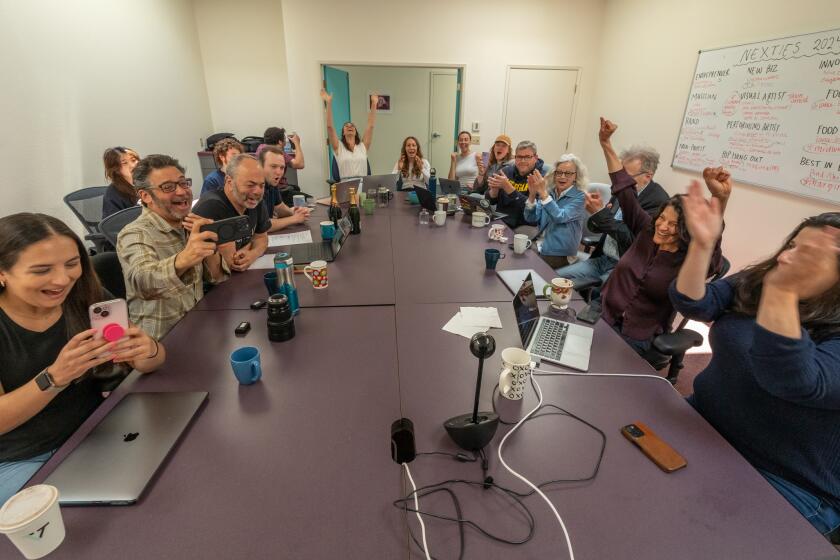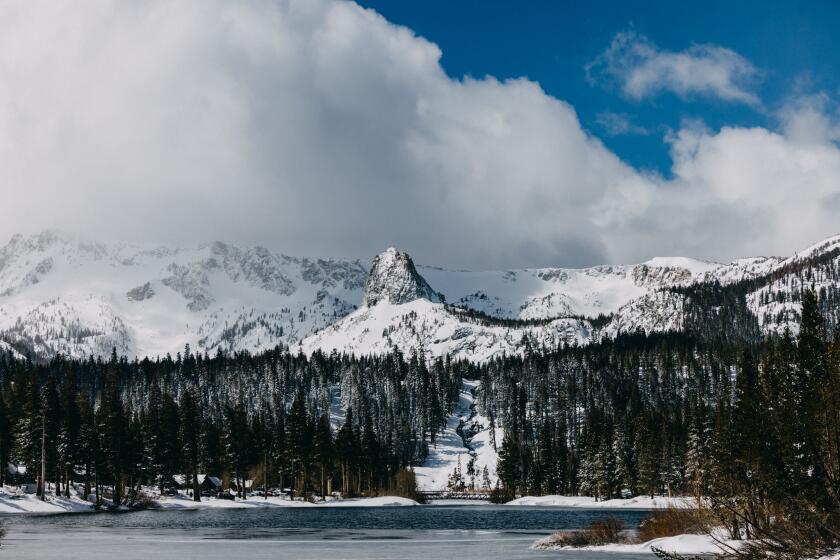A climate letdown at the Super Bowl

This story originally published in Boiling Point, a weekly newsletter about climate change and the environment. Sign up here to get it in your inbox.
Last year’s Super Bowl was a hotbed for advertisements focused on solving the climate crisis. This year, not so much.
There were three TV spots on Sunday featuring electric cars, compared with seven during the 2022 broadcast. Beyond that, the climate pickings were slim — a single ad from mayonnaise producer Hellmann’s warning against food waste, which can spew planet-warming methane (not that the ad mentions this). There was nothing like last year’s soaring Salesforce promo, featuring Matthew McConaughey as an astronaut returning to Earth to protect his home planet.
Don’t get me wrong — I enjoyed the General Motors ad gently poking fun at its new deal to promote electric vehicles in Netflix shows. Jeep’s “Electric Boogie” spot, full of animals doing the electric slide, was weirdly fun. And Ram’s promo for its new electric pickup was certainly memorable, full of sexual innuendo seeking to assuage concerns around “premature electrification.”
But the night’s most popular auto ad — at least according to Cars.com — was Kia’s “Binky Dad” commercial, which spotlights a gas guzzler. The Kia ad also shows a bunch of people driving through the Los Angeles River — an unfortunate Hollywood trope that portrays the river as more of a concrete channel than the natural, life-sustaining waterway it’s supposed to be.
Even worse, Sunday’s car commercials exclusively promoted SUVs and pickup trucks. If you’re going to drive a big vehicle, going electric is better for the climate — and for air quality — than burning gasoline. But larger cars are also a lot more dangerous.
As I said, 2022 was a stronger year for climate and clean energy at the Super Bowl. Check out my story on last year’s ads.
And lest anyone think the climate crisis isn’t relevant to the Super Bowl, or to sports more broadly: The Arizona Republic’s Joan Meiners notes that temperatures are rising in every Super Bowl host city — and nowhere more than the Phoenix area.
On that note, here’s what’s happening around the West:
TOP STORIES
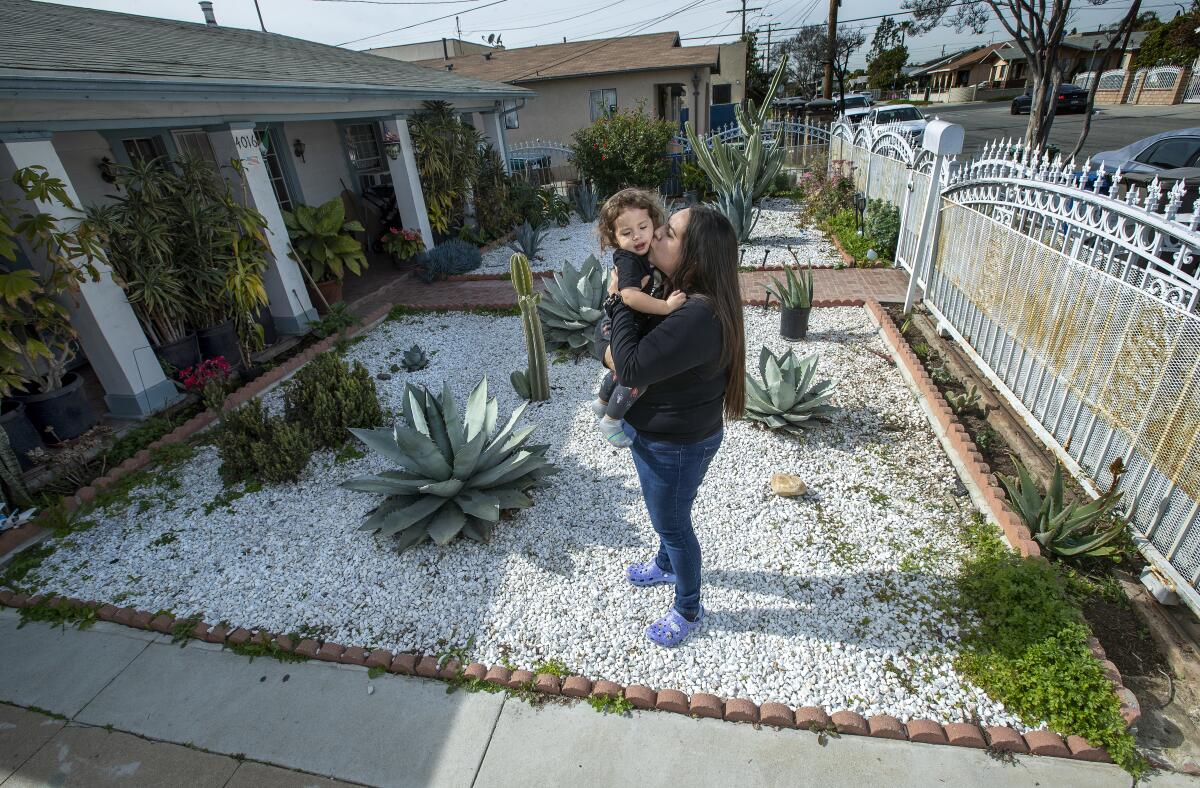
An L.A. Times investigation finds that many southeast Los Angeles County homes supposedly cleaned of lead pollution from Exide’s battery recycling plant still have dangerous levels of the brain-damaging chemical in their soil. Here’s the story from my colleagues Tony Briscoe, Jessica Garrison and Aida Ylanan, who write that follow-up testing in the predominantly Latino, underserved neighborhoods surrounding the Exide plant has uncovered dozens of homes with unsafe levels of lead — raising serious questions about the state’s $750-million cleanup effort. If you live near the old Exide battery smelter, you can use this L.A. Times tool to find out if the cleanup of your property met safety standards or not.
Loads of water evaporates from Lake Mead and other Colorado River reservoirs across the Southwest each year — and under the Law of the River, nobody is held accountable for that water loss. The Times’ Ian James wrote about how that odd oversight contributes to our current water crisis. He also teamed up with Sean Greene, a Times data and graphics editor, to break down the competing Colorado River cutbacks proposed by California and six other states that draw on the river. If you’re looking for historical context, columnist Michael Hiltzik explained the legal and physical origins of our Colorado River shortfalls. “Hoover Dam made the modern West, but also confined it in a straitjacket,” he wrote.
Photographer Brian van der Brug captured stunning before-and-after photos of Lake Oroville, California’s second-largest reservoir, following last month’s storms. Check out his pictures here. We’re still in drought, though — and the consequences of several years of low water supplies are still with us. My colleague Nathan Solis reports that 36 million dead trees were counted across California in 2022 — with drought largely to blame. In Beverly Hills, meanwhile, a plan to chop down dozens of ficus trees to allow for sidewalk repairs is raising protests over lack of shade — a problem in many pavement-heavy cities with insufficient tree canopy, especially as the planet heats up. Here’s the story from Dorany Pineda.
THE ENERGY TRANSITION
A federal judge largely upheld the federal government’s approval of the Thacker Pass lithium mine over objections from conservationists and tribes. That’s good news for General Motors, which plans to invest $650 million in the Nevada mine to supply lithium for electric-car batteries, the Nevada Independent’s Daniel Rothberg reports. Elsewhere in the Silver State, the Biden administration said it would lend $2 billion to a battery-recycling company founded by a former Tesla executive, the New York Times’ Niraj Chokshi reports. A renewable energy company, meanwhile, is asking federal officials to shift the boundaries of Nevada’s proposed Ave Kwa Ame National Monument to allow for a solar farm. Details here from Scott Streater at E&E News.
France just passed a law requiring large parking lots to add solar shade structures. Those solar panels could add as much as 8% to the country’s electrical capacity — without energy losses from long-distance power lines, per the Washington Post’s Michael Birnbaum. I’m including this in a newsletter about the American West because of all the conversations spurred by my Repowering the West reporting project about the potential for small solar installations within cities, rather than big solar projects that eat up wildlife habitat. Speaking of which, the Bakersfield Californian’s John Cox reports that Starbucks is buying power from a huge new solar farm at Southern California’s Edwards Air Force Base.
“Even the companies that positioned themselves as farsighted avatars of the energy transition are backing down. No one should have taken their promises at face value.” Oil giants BP and Shell are backing away from their (relatively modest) clean energy commitments, leading Times columnist Michael Hiltztik to tear into them for putting profits above the habitability of the planet. In California oil country, meanwhile, another fossil fuel company is seeking federal funds for a big carbon capture project that would involve sucking carbon dioxide from the air. Here’s the story from Corbin Hiar at E&E News.
POLITICAL CLIMATE
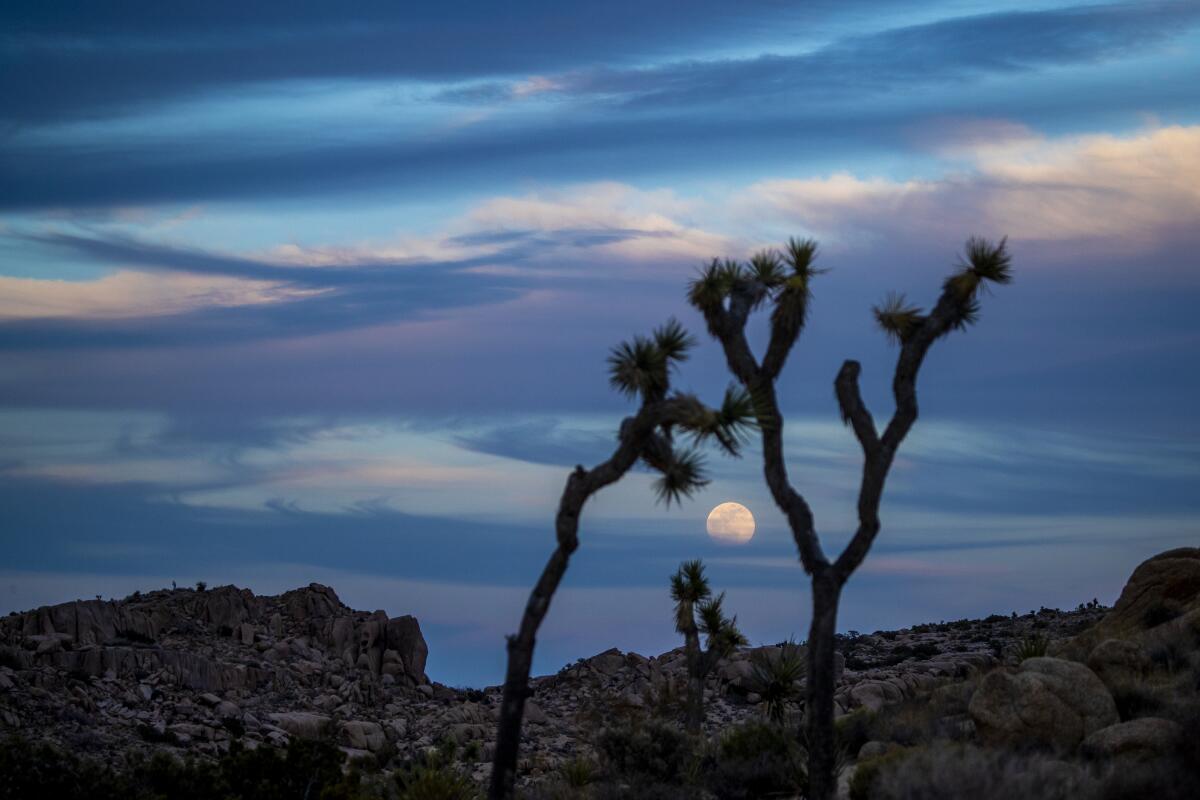
A compromise bill proposed by Gov. Gavin Newsom would add protections for California’s Joshua trees while also helping renewable energy projects move forward in the desert. Newsom’s bill appears to have support from both conservationists and the solar industry, based on this story by my colleague Louis Sahagún. Nationally, Sen. Joe Manchin III (D-West Virginia) and other members of Congress continue to press for permitting reforms that could make it easier for clean energy projects to get built, as Dan Gearino and Kristoffer Tigue report for Inside Climate News. They note that a new power line between California and Arizona — visited by Vice President Kamala Harris for a groundbreaking ceremony last month — will ultimately take 10 years to permit and build. As U.S. Rep. Dan Crenshaw (R-Texas) notes, “We put a man on the moon in less than that.”
“A system created as a check on the influence of business interests is now being taken advantage of more often by companies to challenge the power of unions and other groups pushing progressive policies through the state Capitol.” That system would be California’s referendum process. As The Times’ Taryn Luna writes, it’s currently being used by the oil industry to try to block a new law creating safety buffers between homes and drilling. Luna reports that the fossil fuel industry spent at least $20 million to get a measure on the November 2024 ballot that would overturn the law if approved by voters.
My colleague Tony Briscoe reported recently that California plans to ban decorative plating with hexavalent chromium — the chemical that gives classic cars their distinctive shine but also causes cancer. L.A. Times columnist Gustavo Arellano was not a fan, writing that the proposed regulation, although well-meaning, targets “a way of life whose last admirers and defenders are mostly working-class people of color — an easy sacrifice on the altar of saying you’re saving the planet.”
ALONG THE COAST
The more whales there are, the healthier the ocean is — and the more carbon it absorbs. The Times’ Corinne Purtill has a fascinating story on the crucial role whales play in fighting climate change — including through their poop, which can fertilize organisms that consume large amounts of carbon. Purtill also writes that whales hold millions of metric tons of carbon in their bodies, according to a new study. And they retain much of that planet-warming gas when they die and sink to the seafloor.
The shipping companies accused of damaging an underwater oil pipeline months before it ruptured have agreed to pay $45 million to coastal residents and property owners off the Southern California coast. Details here from my colleagues Hannah Fry and Laura J. Nelson. A little way up the coast, alleged water pollution is the cause for a lawsuit against Long Beach’s annual “Big Bang on the Bay” Independence Day fireworks show, Grace Toohey reports. The outcome of the lawsuit could affect other coastal fireworks displays. “We’d like to see the Clean Water Act enforced statewide,” one attorney said.
In Washington, simple rocks are being used to restore beaches as the ocean rises. “Engineers — who have long depended on rigid sea walls — are now closely watching this softer approach,” Sarah Trent writes for High Country News. “North Cove’s solution, which resembles the techniques many Indigenous communities use to cultivate shellfish, looks less like the conventional structures engineers know, and more like the dunes and berms that centuries of storms and tides build on their own.”
ONE MORE THING
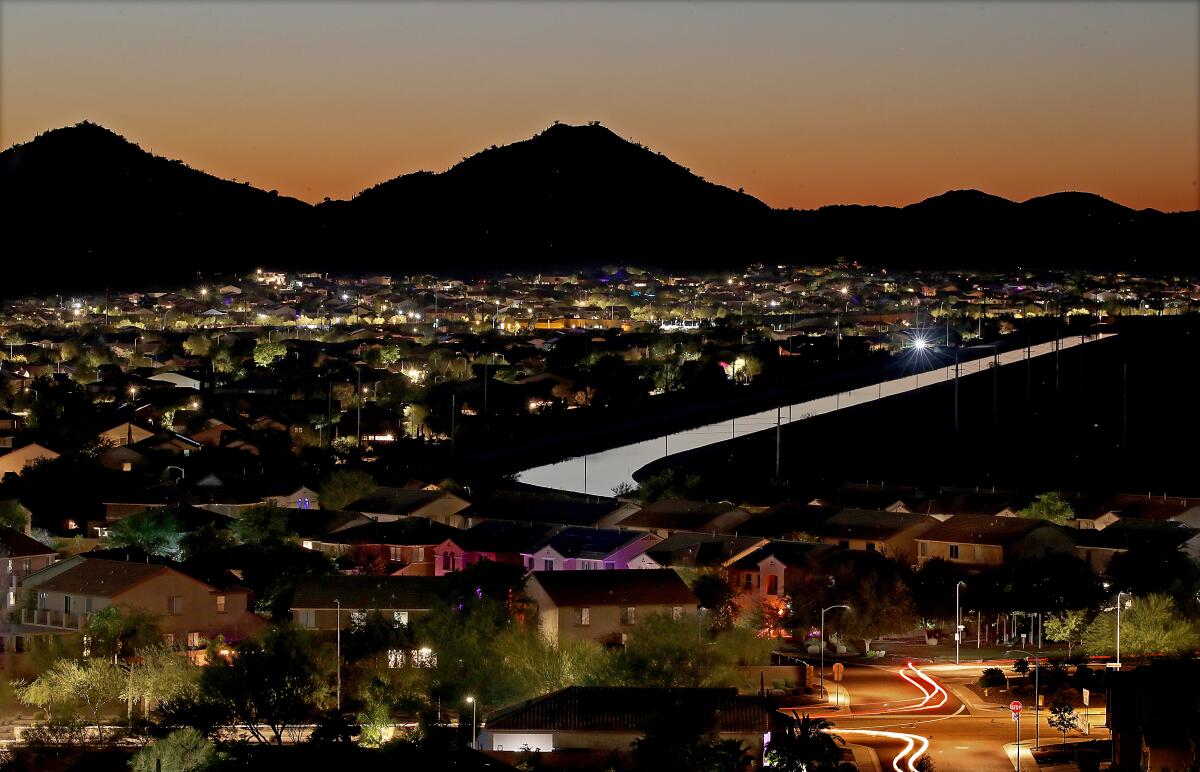
The U.S. Bureau of Reclamation — which operates many of the dams, canals and hydroelectric plants that bring water and power to the West — sent a bizarre tweet over the weekend. In celebration of Super Bowl Sunday, the federal agency wrote:
“Hey all you #SportsFans, [did you know] that a Reclamation project sits next to the Cardinal’s State Farm Stadium? The Grand Canal aided in Phoenix’s early agricultural development of Phoenix; now used for flood irrigation and landscaping.”
I did a double take when I saw this. Was the Bureau of Reclamation — the agency charged with finding solutions to climate-fueled water shortages along the Colorado River — really bragging about supplying water for flood irrigation and landscaping? At a time when farmers and homeowners face growing pressure to cut down on those arguably wasteful water uses?
I asked the Bureau of Reclamation for comment on the tweet. As of press time, I hadn’t received a reply.
That’s all for today. We’ll be back in your inbox on Thursday. If you enjoyed this newsletter, or previous editions, please consider forwarding it to your friends and colleagues. For more climate and environment news, follow @Sammy_Roth on Twitter.
Toward a more sustainable California
Get Boiling Point, our newsletter exploring climate change, energy and the environment, and become part of the conversation — and the solution.
You may occasionally receive promotional content from the Los Angeles Times.

